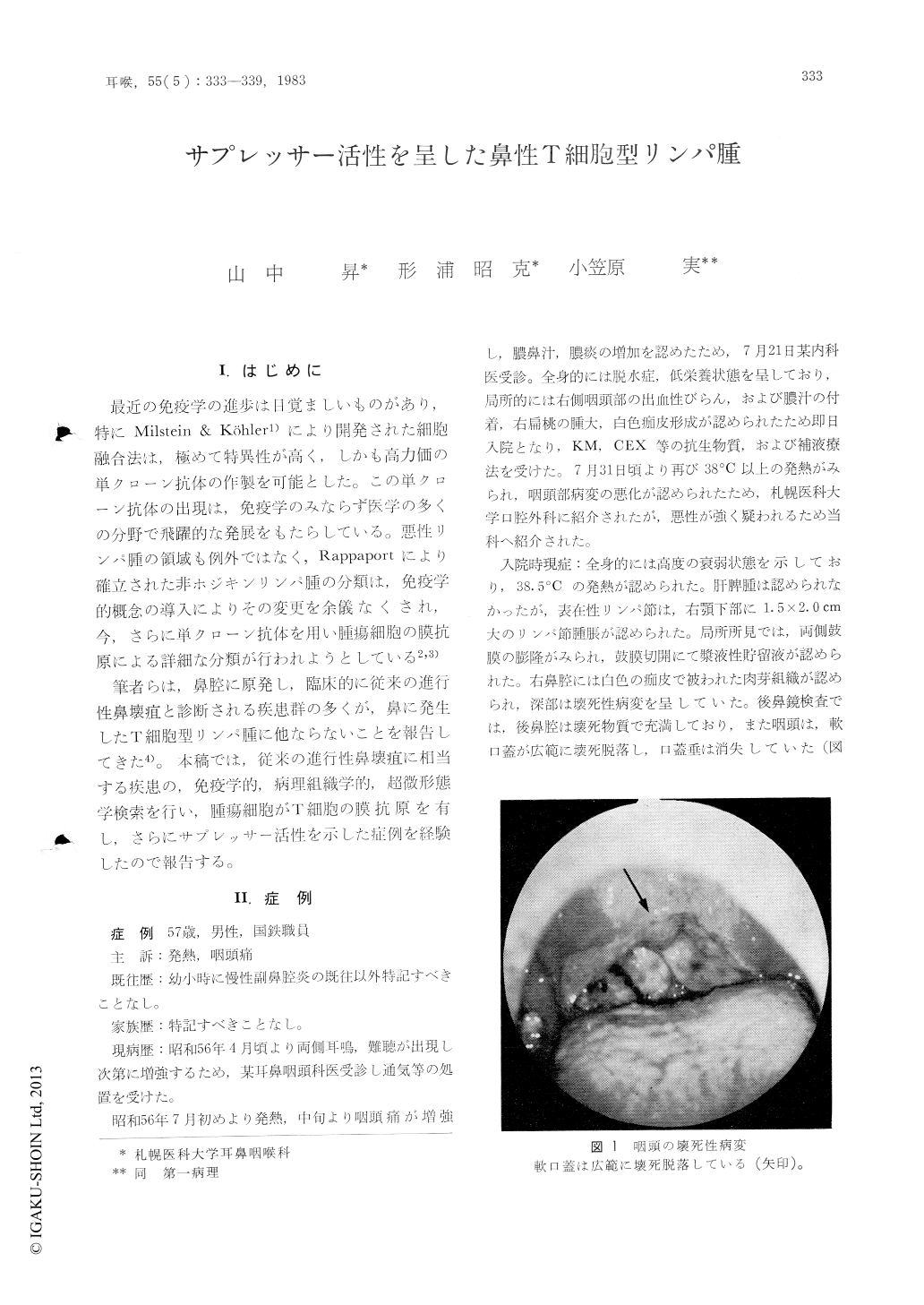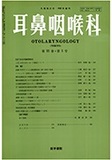Japanese
English
- 有料閲覧
- Abstract 文献概要
- 1ページ目 Look Inside
I.はじめに
最近の免疫学の進歩は目覚ましいものがあり,特にMilstein & Kohler1)により開発された細胞融合法は,極めて特異性が高く,しかも高力価の屯クローン抗体の作製を可能とした。この単クローン抗体の出現は,免疫学のみならず医学の多くの分野で飛躍的な発展をもたらしている。悪性リンパ腫の領域も例外ではなく,Rappaportにより確立された非ポジキンリンパ腫の分類は,免疫学的概念の導入によりその変更を余儀なくされ,今,さらに単クローン抗体を用い腫瘍細胞の膜抗原による詳細な分類が行われようとしている2,3)
筆者らは,鼻腔に原発し,臨床的に従来の進行性鼻壊疽と診断される疾患群の多くが,鼻に発生したT細胞型リンパ腫に他ならないことを報告してきた4)。本稿では,従来の進行性鼻壊疽に相当する疾患の,免疫学的,病理組織学的,超微形態学検索を行い,腫瘍細胞がT細胞の膜抗原を有し,さらにサプレッサー活性を示Lた症例を経験したので報告する。
Immunological, histopathological, and ultrastructural features of nasal T cell lymphoma was investigated in a patient whose initial diagnosis was "rhinitis gangrenosa progressiva" or lethal midline granuloma. Tumor cells showed positive staining with anti-Leu 1 monoclonal antibody which defined all peripheral T lymphocytes, and with anti-Leu 3a which defined helper/inducer T cell subset. In vitro assay of tumor cells cocultured with normal tonsillar lymphocytes, tumor cells strongly suppressed DNA synthesis of tonsillar lymphocytes. These results indicated that tumor cells might be originated from immunoregulatory inducer T cells. Histopathological and ultrastructural features of this case were compatible to those of T cell lymphoma previously reported.

Copyright © 1983, Igaku-Shoin Ltd. All rights reserved.


